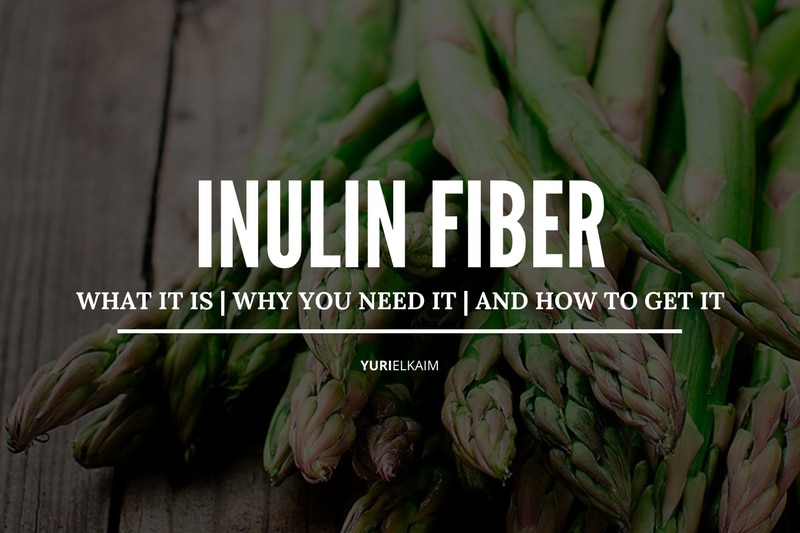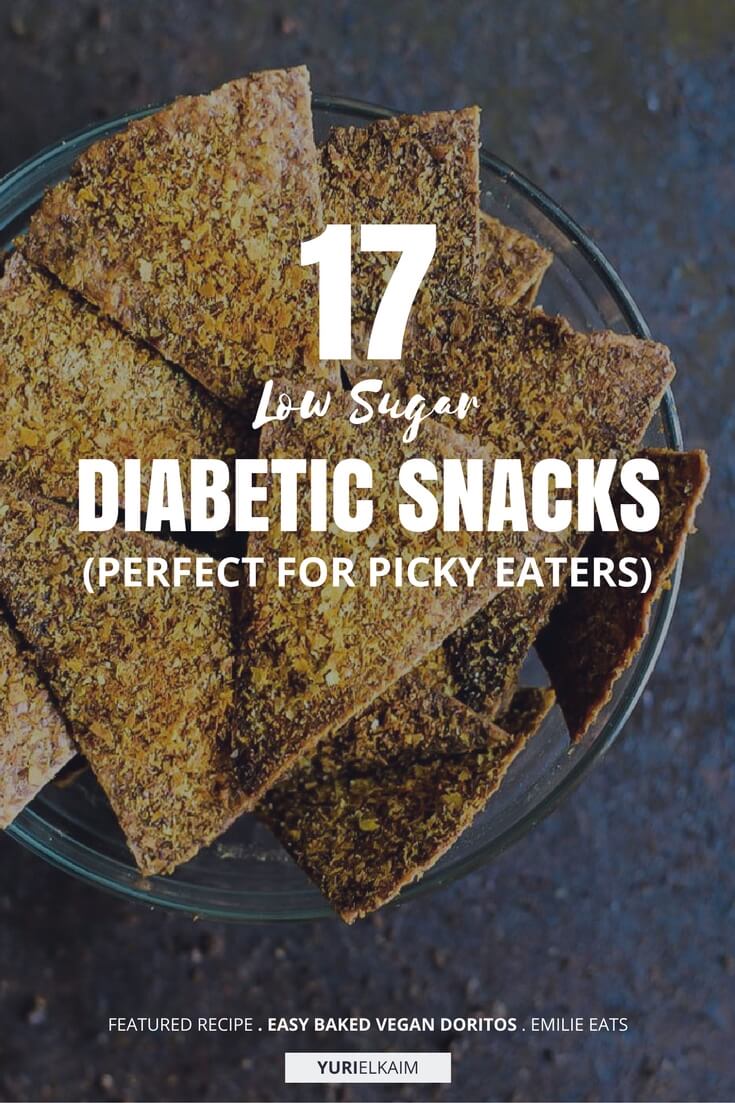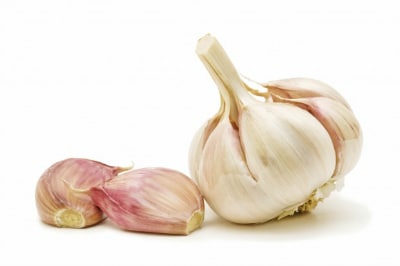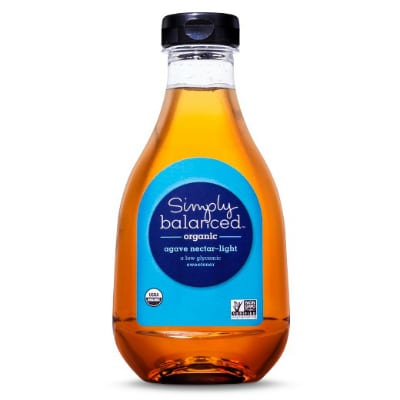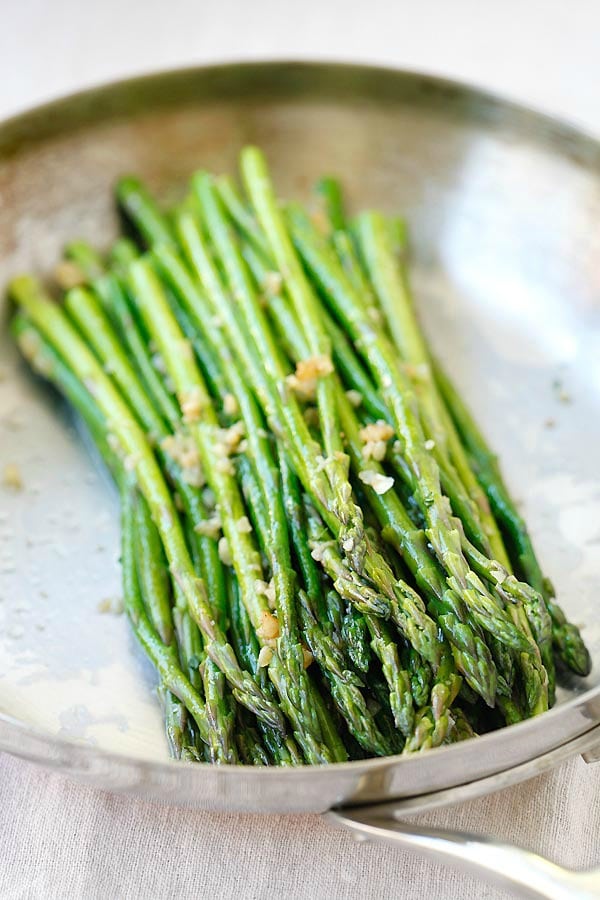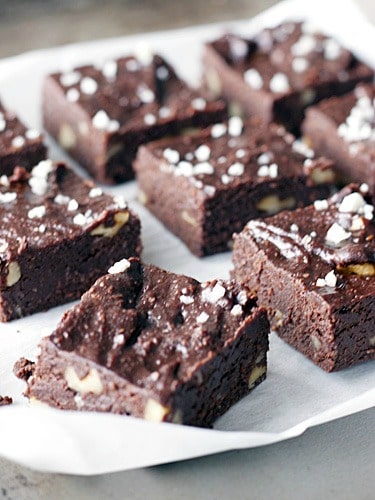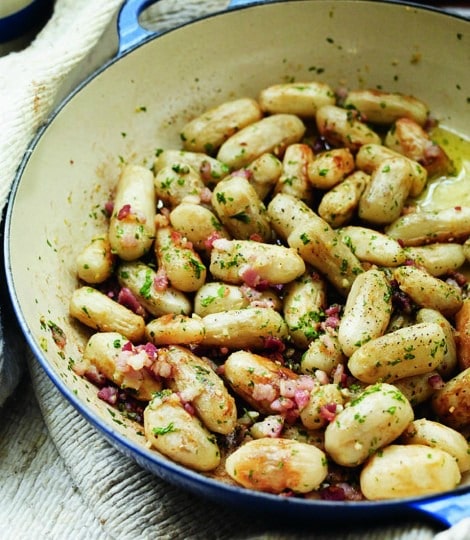In this article
- What is Inulin Fiber?
- Inulin vs FOS
- Why You Need It: The Top 5 Inulin Benefits
- Is There a Downside? 3 Inulin Side Effects
- Who Should Avoid Inulin?
- How to Add Inulin Fiber to Your Diet
- Supplementing with Inulin
- Say No to Agave Nectar
- How to Prevent Gas and Bloating
- 5 Recipes for Increasing Your Inulin
- Increase Your Inulin
It’s time for a pop quiz! What’s a good source of fiber that can sweeten up your baked goods, keep you regular, and control blood sugar just as effectively as resistant starch?
If you guessed inulin fiber, you’re correct.
There are plenty of reasons to add inulin into your diet, and the ones I listed just skim the surface. It’s also awesome for your gut, keeps your heart healthy, and cholesterol levels in check, and can even help you shed some pounds.
We’re going to get into all of the nitty-gritty details of why you should consider adding this powerful fiber to your diet and how to do it, but first let’s take a closer look at exactly what inulin is.
What is Inulin Fiber?
Inulin is a type of carbohydrate known as a fructan, which is made up of chains of fructose molecules.
This naturally occurring carbohydrate is also a form of soluble fiber, which means it dissolves in water and forms a gelatinous substance that moves through the body undigested, promoting fullness and satiety and adding bulk to your stool, which can keep you regular.
Insoluble fiber, on the other hand, is found in things like the seeds and skin of fruits and vegetables. And unlike soluble fiber, it doesn’t absorb water, but instead moves through your gastrointestinal (GI) tract undigested.
As inulin moves through your intestines, it also acts as a prebiotic. That means it’s fermented and converted into short-chain fatty acids in the colon, which helps to feed and nourish the beneficial bacteria in your gut (1).
Inulin vs FOS
Even though the terms “inulin” and “FOS” are often used interchangeably or lumped together, there is a difference between the two.
The real distinction is in their chain length. As the name suggests, fructooligosaccharides (FOS) are a type of oligosaccharide whereas inulin is a type of polysaccharide.
Polysaccharides are longer chains, composed of ten or more molecules. Oligosaccharides are shorter, made up of more than two molecules, but less than 10.
But that’s pretty much where the difference ends. Much like inulin, FOS is found naturally in the food supply. It’s present in many of the same foods as inulin and has the same effects on health, which we’ll get to shortly.
Why You Need It: The Top 5 Inulin Benefits
1. It Relieves Constipation
If you find yourself struggling and straining when you get to the bathroom, inulin could be just what you need.
As you read earlier, inulin is a soluble fiber, and because of that, it adds bulk to the stool and can get things moving, making it much easier to take care of business in the bathroom.
It also helps improve the health of your gut by increasing the amount of beneficial bacteria in your colon. We’ll talk more about how it does that in just a bit, but as you can imagine, maintaining optimal intestinal health is crucial when it comes to cutting constipation.
Research into the effects of inulin on constipation has been pretty impressive. In one study, participants were given 15 grams of inulin per day for two weeks and found that they had a significant increase in stool frequency and fecal bulk (2).
2. It Keeps Blood Sugar Steady
If you have diabetes, adding more fiber into your diet is one of the best things you can do for your health.
Recommended Reading:
- The Real Causes of Type 2 Diabetes (And How to Cure It)
- 11 Quick and Easy Ways for Lowering Blood Sugar Naturally (And Losing Belly Fat)
- 17 Easy, Low Sugar Snacks for Diabetics (Perfect for Picky Eaters)
It works in a similar way to resistant starch, moving through your body undigested to steady your blood sugar.
Soluble types of fiber, like inulin, help keep blood sugar levels under control by slowing the digestion and absorption of sugar. This prevents that spike in blood sugar you often see after eating a sugary snack—and the subsequent crash that comes with it.
Studies show that supplementing with inulin can even improve insulin sensitivity. One trial found that 10 grams of inulin per day was enough to reduce fasting insulin concentrations (3).
Another study showed that 10 grams of inulin was able to reduce blood sugar as well as hemoglobin A1C, a marker that looks at blood sugar control over a three-month period (4).
3. It Reduces Cholesterol
Inulin can help improve your heart health because it can drop “lousy” LDL cholesterol levels fast.
Let me explain exactly how that’s possible.
Your body contains bile acids, which aid in the digestion and absorption of fats. These bile acids are made up of cholesterol.
When you consume inulin (or any type of soluble fiber), it binds to those bile acids and removes them from the body. The liver then uses the cholesterol circulating through your blood to make more bile acids, which decreases the amount available to make “lousy” LDL cholesterol.
Think of inulin like a magnet moving through the body picking up bile acids. Since there are less bile acids floating through the body and your body needs a certain amount, your liver is forced to use up LDL cholesterol to make more.
The effects of inulin on cholesterol levels have been pretty well established. A 2015 study, for example, used foods enriched with inulin to look at the effects on cholesterol levels of participants. Consuming 10 grams of inulin per day led to a reduction in both total cholesterol and “lousy” LDL cholesterol (5).
4. It Keeps Your Gut Healthy
One of the biggest benefits of inulin is its incredible effect on intestinal health.
As I mentioned earlier, inulin acts as a prebiotic, essentially feeding all that good bacteria in your gut and helping it to grow. That means better digestion, a stronger immune system, and less constipation.
Research shows that supplementing with inulin can help build up the population of beneficial strains of bacteria, like bifidobacteria, in your intestines (6).
Inulin can also improve intestinal permeability, which can be a good thing if you suffer from leaky gut syndrome. This helps keep the junctions in the gut tight to make sure what’s in your intestines stays there instead of leaking out into the bloodstream, causing symptoms like fatigue, bloating, and gas (7).
5. It Helps with Appetite and Weight Loss
Because inulin moves so slowly through the digestive tract, it can curb cravings and keep you feeling full between meals. This translates to a decreased appetite and, of course, weight loss.
Supplementing with any type of fiber will have this effect, but inulin is especially effective.
One trial compared cellulose (another type of fiber found in fruits, vegetables, and whole grains) and inulin and looked at how they both influenced weight loss. They gave half of the participants cellulose and half received inulin for the 18-week study. While both groups lost about 5 percent of their body weight by the ninth week, the group receiving inulin had lost significantly more weight by the end of the study (8).
Is There a Downside? 3 Inulin Side Effects
While inulin has many benefits for your health, it can cause some not-so-fun side effects as well. The biggest ones include:
- Gas: When inulin reaches the colon, it’s broken down by the gut bacteria, producing a gas. It doesn’t affect everyone who consumes inulin, but experiencing gassiness is one of the most common side effects of inulin.
- Bloating: That gas buildup I just mentioned can also cause bloating and abdominal cramps. This can also be a result of having too much inulin too soon without working your way up. In just a bit, we’ll discuss how to prevent this from happening.
- Laxative effect: Like any type of fiber, inulin adds bulk to the stool and can increase the frequency of bowel movements. While this can be a good thing when you have constipation, it might not be so great when you’re on the other end of the spectrum.
Who Should Avoid Inulin?
Even though inulin does boast an impressive set of health benefits, not everyone should start piling it into their diet. In fact, for some people, it can actually cause some unpleasant digestive problems.
If you suffer from irritable bowel syndrome (IBS), you probably want to pass on the inulin. For those with IBS, adding inulin into your diet can cause symptoms to flare up and trigger side effects like gas and bloating, so it’s best to just steer clear.
If you’re following a FODMAP diet to treat other digestive issues, this is also an ingredient that you’d want to avoid.
FODMAP stands for “fermentable oligosacchardies, disaccharides, monosaccharides, and polyols” and is a collection of short-chain carbohydrates and sugar alcohols found in our food that can be poorly absorbed in the small intestine by some people. Since inulin is made up of fructans, it falls into that category and should be avoided in the FODMAP diet.
Some people are also extra-sensitive to inulin and may not tolerate it well. If you find that even small amounts of inulin cause gas, bloating, and cramps, you might be inulin intolerant. Note that this is different than just experiencing the typical side effects of inulin, as inulin intolerance will occur with even minute amounts of inulin.
Finally, although inulin itself is okay, it’s recommended that pregnant and breastfeeding women avoid one of the top inulin-containing foods, chicory (see list below), as it can potentially lead to miscarriage (9).
How to Add Inulin Fiber to Your Diet
If you’re looking to amp up your inulin intake, I have good news: unlike some other supplemental sources of fiber, like psyllium, you can get plenty of inulin in through your food.
Chicory root is one of the most common ingredients found in inulin supplements, but you can also add it directly to homemade granola bars or smoothies as well to add a bit of a sweet, chocolatey taste. It’s easiest to find in online stores and can be bought in sliced, dried, or ground form.
Other inulin foods include:
- Onions
- Garlic
- Asparagus
- Jerusalem Artichokes
- Bananas
- Leeks
Supplementing with Inulin
For a concentrated dose of inulin, supplements are available at most health stores and pharmacies. Although it’s most commonly sold in powder form, inulin capsules are also another option.
When picking your supplement, look for one that has inulin as the primary prebiotic with minimal amounts of gelatin or vegetable cellulose, like the NOW Foods Inulin Prebiotic. Usually you’ll see chicory root as the main ingredient in most inulin supplements.
Many brands also produce probiotics with prebiotics like inulin added in. This enhances gut health using two methods: it boosts good gut bacteria by providing new strains directly through the probiotic and it also helps grow beneficial bacteria through the addition of prebiotics.
Remember, if you suffer from IBS, have inulin intolerance, or are following a FODMAP diet, you should avoid inulin, even in supplement form.
Say No to Agave Nectar
You might have heard of agave nectar at some point, but did you know that it actually comes from inulin?
Agave is a natural sweetener produced from the Agave tequiliana plant – same plant used to produce tequila.
It can be found in both syrup and powder form and has a mild, sweet flavor that is often used in place of sugar.
Here’s the problem, though: during the process of turning agave into syrup, the fructans that make up inulin are broken down into fructose.
This pretty much nullifies any of the beneficial, health-promoting qualities found in inulin and makes it just as bad (if not worse) than plain old sugar.
That’s because fructose has to be metabolized in the liver. Consuming too much fructose can spur the production of byproducts like uric acid and triglycerides, two substances that can increase your risk of heart disease.
Instead of using agave, I recommend using inulin powder, pure maple syrup, or raw honey to naturally sweeten things up. Inulin powder derived from chicory root can bring an especially sweet flavor to hot drinks or desserts.
Substitute an equal amount of inulin powder in place of sugar in recipes for a double dose of fiber and flavor. Just avoid adding more than 2 teaspoons per serving to prevent those unpleasant side effects.
How to Prevent Gas and Bloating
When you’re first starting any inulin supplement, you’ll want to progress slowly to prevent adverse effects like gas and bloating. Begin by taking 3 grams per day for 1 to 2 weeks to make sure you can tolerate it. Then slowly increase your dosage by about 1 gram per week until you reach a daily intake of 5 to 10 grams.
If you’re getting your inulin from food, also make sure to gradually build up. Try having one serving per day of an inulin-rich food and see how your body handles it, then slowly increase your intake.
This can help make sure you’re able to tolerate inulin and also avoid any negative symptoms, like gas, bloating, and cramping.
5 Recipes for Increasing Your Inulin
Looking for some simple ways to add more inulin into your day? I’ve got you covered! Here are a few quick and easy recipes to get you started.
1. Garlic Butter Sauteed Asparagus
Pairing up inulin-rich garlic and asparagus, this recipe delivers a hearty amount of inulin fiber into your diet.
Find the recipe here: Rasa Malaysia
2. Better Than Coffee Chicory Latte
Roasted chicory root takes center stage in this delicious hot drink, upping the amount of inulin while adding a touch of sweetness.
Find the recipe here: Hormones & Balance
3. Gluten-Free, Sugar-Free Fudgy Brownies
These healthy brownies are naturally sweetened with inulin and make a great guilt-free dessert.
Find the recipe here: Domestifluff
4. Jerusalem Artichokes with Bacon, Garlic, Lemon
Jerusalem artichokes and garlic are brimming with inulin fiber in this good-for-your-gut recipe.
Find the recipe here: Delicious Magazine
5. Mango Inulin Smoothie
No cooking is required for this fiber-filled smoothie. Swap the yogurt for a dairy-free variety to keep it anti-inflammatory.
Find the recipe here: MorLife
Increase Your Inulin
From improving digestive health to regulating blood sugar and cholesterol levels, inulin can provide a pretty diverse set of health benefits for most people.
Remember that if you suffer from IBS, are following a FODMAP diet, or are inulin intolerant, you should skip the inulin.
Between both food and supplemental sources, there are plenty of options to increase your intake and take advantage of its many benefits. Just remember to go slowly and gradually increase your intake to maximize the health benefits and minimize any negative symptoms.
Healthy, Delicious Meals in a Flash
Rev up your weeknight meals with some simple, fast, and easy recipes that will nourish everyone in your family.
The All-Day Energy Diet Community Cookbook is filled with 67 gluten- and dairy-free recipes that are designed to be ready to eat in about 15 minutes. You can feel good about serving (and eating!) these meals because they’re low in sugar but packed with the nutrients your body needs.
And it’s FREE! Just click the image below to get your copy.

